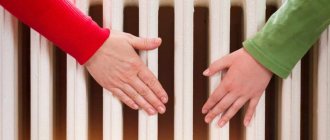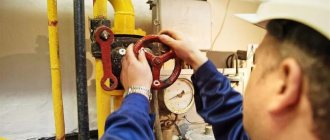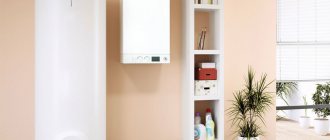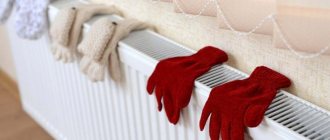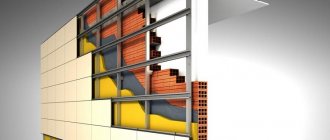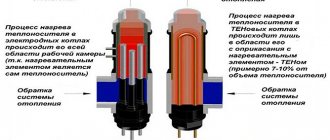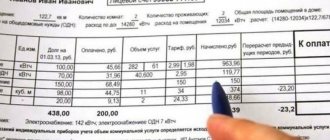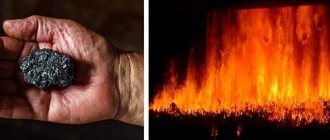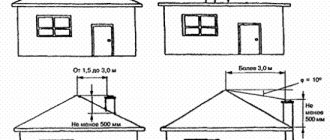Home/Heating rules/Temperature in the apartment
One of the important conditions for a person’s well-being is the optimal temperature in the apartment. First of all, regulation of room temperature depends on human preferences: some people like it cool, others are more comfortable in the warmth. However, we should not forget about the temperature standards recommended by experts in residential premises. Both overheating and hypothermia can negatively affect the health of household members. Knowing the permissible upper and lower limits of room temperature in the apartment, you can easily adjust the comfortable microclimate in your home and not harm the health of your household.
Temperature standards in an apartment according to SanPiN
There are sanitary and epidemiological requirements for the microclimate of a home, SanPiN 2.1.2.2645-10, which specify the permissible limits of temperature in the apartment. The annex to the resolution of the Chief State Sanitary Doctor of Russia No. 175 dated December 27, 2010 provides the following figures:
- in the living room the temperature is allowed from 18 to 24 degrees;
- in the kitchen, bathroom and toilet the recommended norm is from 18 to 26 degrees Celsius;
- in the inter-apartment corridor, 16 to 22 degrees are allowed;
- in the lobby and stairwell the thermometer should show 14 - 20 degrees;
- The optimal air temperature in pantries is from 12 to 22 degrees Celsius.
Attention
These are the standards recommended during the heating season. In the warm season, according to SanPiN, the temperature in the apartment increases by 4 degrees.
The difference between temperature conditions in adjacent rooms should not exceed 3 degrees. Otherwise, when moving around the apartment, a person feels discomfort.
The sun is red-infrared
Infrared heaters operate even faster and more economically. The principle of operation here is radically different from those described above. Thermal radiation, like ordinary sunlight, is not absorbed by the air, but is transmitted to surrounding surfaces.
All energy is transferred without loss to people and objects in the room.
At the same time, the temperature in the room may even be 2-3 degrees lower than optimal, but people will still be comfortable in it: infrared heaters provide surprisingly even and soft heat.
Despite the fact that infrared heaters are most often used at industrial facilities or sports facilities, their use is also possible in private country houses and even apartments. The only condition is that the ceiling height should not be lower than 2.5 meters.
Metal, ceramic, glass-ceramic, as well as quartz elements and halogen lamps are used as infrared emitters.
Infrared heaters are available in the form of floor, ceiling or wall units and are capable of providing both general and zone heating, and in the latter case they will help to save significantly.
Normal temperature in an apartment for the health of an adult
The normal air temperature in a home depends on several factors: the time of year, the region of residence, and the technical features of the home. An important criterion is the subjective preferences of a person, on which he relies when creating comfort in the house. At the same time, the standards established by experts are time-tested and based on the recommendations of doctors. Failure to follow these rules may lead to health problems.
If the room is too hot, a person feels lethargic and fatigued. Due to loss of moisture, the blood becomes thicker and the heart works harder. In people with cardiovascular diseases, their condition worsens.
For your information
In an overly warm environment, various pathogenic bacteria that can cause dangerous diseases actively multiply. In addition, constant overheating of the body, with high temperatures in the apartment, is fraught with such a dangerous condition as dehydration, as a result of which the body loses important microelements.
Hypothermia, in turn, causes constant respiratory diseases and heat exchange disturbances, and also negatively affects the human nervous system.
To maintain good health, the room should not be overheated or overcooled above the normal temperature in the apartment. The temperature norm in residential premises for an adult is considered to be 20 degrees. And to maintain sound, healthy sleep and to prevent insomnia, it is recommended to maintain a temperature of 18 degrees in the bedroom.
What factors influence
The microclimate in the house is influenced by both external and internal factors. External factors include the location of the premises, the change of season, the technical parameters of the structure, humidity and atmospheric air pressure.
Subjective factors largely depend on the residents themselves. People are able to independently maintain comfort in their home by performing a number of specific actions in a timely manner.
So, to save heat, it is enough:
- Replace old frames with energy-saving double-glazed windows or carefully seal cracks in old structures.
- If necessary, insulate the walls of corner rooms.
- Lay a warm floor covering or install heated floors.
- Add a heat reflective screen to the wall next to the radiator.
- Do not cover radiators with furniture or thick curtains.
- If possible, insulate the loggia and front door.
Climate
The start dates of the heating season over the vast area of Russia differ greatly depending on latitude. To draw up heat supply schedules, average winter time values are taken from a special temperature table. For the southern territories they are one, and for the northern territories they are different.
For example, in the Nenets Autonomous Okrug the heating season begins in September, and in the Moscow region - only in early October. In the Krasnoyarsk Territory and Chukotka, residents will begin heating their apartments at the end of August. For residents of the Black Sea coast, heat is supplied for only three months, starting in December.
There are places in the Russian expanses where it is necessary to warm up houses throughout the year, for example, on the polar island of Dikson.
Season
The change of season also affects the microclimate of the home. With the onset of dank and rainy autumn weather, the walls of houses heated over the summer gradually cool down. In the spring, when the heating is turned off, room thermometer readings also decrease.
Building Features
The technical characteristics of the building, its thermal insulation, materials - all this affects the microclimate of the home. For example, each additional corner in the house is a separate cold area that requires additional heating.
A brick building is warmer than a panel building with seams, and wooden houses not only keep heat well in winter, but also provide pleasant coolness in the summer.
Human factor
The human factor plays an important role when choosing a comfortable thermal regime. For example, some people prefer a warmer atmosphere, while others prefer cooler air.
Many people open their windows to bring in fresh air even in the winter months, and use air conditioning in the summer heat. This lowers the degrees by several units.
Normal temperature in an apartment for children's health
The optimal temperature regime in the apartment is one of the necessary conditions for the proper development of children. The air temperature in the house is especially important for newborns. Their thermoregulation mechanism is not fully developed, so infants are very sensitive to temperature changes. However, you should not be afraid of the cold. A child can be overheated, and this also does not benefit his health.
IMPORTANT
Doctors consider the most optimal temperature in an apartment for a newborn’s room to be 19 – 22 degrees. If the thermometer in the nursery shows more than expected, the child is given water more often and a minimum of clothing is left on him to prevent overheating.
For children aged 1 year, the recommendations remain the same. As you grow older, the upper limit of the temperature norm is lowered.
Air exchange rate
Air temperature is not the only parameter that directly affects the comfort and safety of people living in the house. Air exchange is important for the body: the presence of fresh air, ventilation of residential and non-residential premises.
This parameter is also regulated by SanPiN regulations. Thus, the required air exchange rate for a living space with an area of 18 m² is 3 m³/h per square meter, for a kitchen - three times more.
Air exchange rate is a characteristic determined by the ratio of air removed or supplied from a room per hour to the volume of this room.
Normal air temperature in winter
The heating season, according to accepted standards, begins when the average air temperature has been below 8 degrees for five days in a row. The end of the season is considered to be the opposite phenomenon - air warming above 8 degrees for five days in a row.
The relevant document (GOST 30494 - 2011) clearly states what the room temperature should be in winter. The minimum permissible mark on the thermometer is +18 degrees, the maximum is +24. The maximum figure is assumed for the bathroom. To prevent pathogenic microorganisms from developing in a humid environment, the air in the bathroom should be warmer.
During the daytime, temperature fluctuations are unacceptable. At night, a decrease of 3 degrees is allowed.
How to correctly measure the temperature in an apartment?
Often the temperature in an apartment during the cold season does not meet GOST standards. This may be the basis for filing a complaint with the appropriate authorities in order to eliminate violations. For a complaint to be justified, it is necessary to correctly measure the temperature in the apartment and record the result obtained. To obtain reliable parameters, you must follow some rules:
- Measurements cannot be taken on a sunny day. Even on winter days, the sun's rays can warm up the rooms to some extent. Therefore, it is recommended to measure the temperature on a cloudy day or early in the morning.
- During the cold season, measurements cannot be made at outside temperatures below minus 5 degrees.
- Before starting measurements, you should check the presence or absence of heat leaks from residential premises. This could be old windows or a violation of the tightness of interpanel seams. If the causes of heat leakage are detected, measurements are made only after they have been eliminated.
- The temperature in apartments is measured in two rooms (with the exception of one-room apartments). Measurements are taken three times at 5-minute intervals.
- During the procedure, the temperature measuring device in the apartment must be located at a distance of at least a meter from the outer wall and at least one and a half meters from the floor. All instruments used for measurements must undergo preliminary testing.
- Before contacting the emergency dispatch service, it is advisable to carry out preliminary measurements yourself in order to compare the data obtained.
Emergency team workers take temperature measurements according to all rules and draw up a report. It should contain the following points:
- date of temperature measurement in the apartment;
- information on the composition of the commission that carried out the measurements;
- description of the apartment;
- instrument readings;
- temperature value;
- signatures.
For your information,
the Report on temperature measurements in the apartment is drawn up in two copies. One remains with the owner of the apartment, the other with the members of the commission.
Creating an optimal microclimate
A residential building needs constant maintenance, especially in the cold season, since only proper heating organization will help maintain an optimal microclimate in it.
Before the start of the heating season, it is recommended to check windows and doors for cracks through which heat can escape. If necessary, they should be sealed with special tapes. Skirting boards must be well attached and holes in the floor must be eliminated. It is important not to seal all the windows so that you can periodically open them for ventilation.
If the temperature in the child’s room is below normal, it is recommended to warm it up artificially. If you use a heater, you should install a special humidifier in the room to prevent the air from drying out. If this is not possible, it is allowed to place a basin of water in the room, which will serve as a humidifier. To control temperature and humidity, it is recommended to purchase special devices.
During the heating season, it is quite difficult to regulate the temperature. Today there are various models of radiators on the market that allow you to monitor the performance in each room. They are equipped with special thermostats. The device can be configured depending on the needs of the household and the standards of each room; it will independently reduce or increase the heat transfer of the battery. Such a device is not necessary in every room, but it is recommended to install it in a nursery.
How to correctly measure the coolant temperature?
In the heating system, the coolant is hot water heated to the required temperature. Current legislation has established temperature standards for coolant in an apartment building. According to regulatory documents (SNiP 2.04.05), the following parameters are considered the norm:
- 96 degrees with a two-pipe system;
- 116 degrees with a one-pipe system;
- The average heating temperature of the batteries is 78 – 92 degrees.
To measure the coolant, you need to place an alcohol thermometer on the radiator. After a few minutes, check the result, to which one degree should be added. For a more accurate measurement, you can use a room infrared thermometer.
You can also take the temperature of the coolant in the apartment using an electric meter, which is fixed to the battery using a thermocouple wire.
Additional Information
The easiest way is to measure the temperature of tap water poured into a glass.
When can I file a complaint?
If utility services do their work in bad faith, the quality of housing and communal services provided decreases, and temperature standards in the apartment are not observed. Any citizen has the right to file a formal complaint in the following cases:
- when the temperature in the living rooms of the apartment is less than the required norm;
- if in one calendar month the heating was turned off for a total of more than 24 hours;
- if one-time heating outages lasting more than 15 hours occur at street temperatures below 12 degrees.
Step-by-step instructions for writing a complaint and a list of required documents
A well-drafted complaint about the temperature discrepancy in the apartment, with justification and accompanied by the necessary papers, is an official document. The relevant authorities will not be able to ignore it. The complaint is drawn up according to the following rules:
- The header of the document is drawn up in the upper right corner: here they write the name of the authority to which they are applying, their data: last name, first name and patronymic, telephone number, address.
- In the center of the document the name is written - the claim, and then its essence is stated, the violations committed in the heating supply and their consequences are described. It is necessary to indicate during what time period there was no heating or the temperature regime in the apartment did not meet established standards.
- The following sets out the applicant’s requirements, including the requirement to recalculate utility bills (the right to recalculation is guaranteed to users of utility services by Article 29 of the Law “On Protection of Consumer Rights”).
- The author of the complaint may indicate that in case of failure to comply with the requirements, he will appeal to higher authorities for compensation for damages.
- At the end of the complaint there is a date and signature.
A sample complaint about non-compliance with temperature standards in an apartment is available.
If the complaint is collective, a sheet with the signatures of the residents interested in the issue must be attached to it. In any case, it is drawn up in two copies. One remains at the institution, the other is marked with an incoming number and date of receipt. The applicant keeps this copy as a guarantee that his complaint will be considered.
Attention
The complaint is accompanied by a temperature check report drawn up in advance.
Possible outcomes of the complaint
After receiving a complaint about a temperature discrepancy in the apartment, the housing and communal services company must eliminate the violations as soon as possible. If this does not happen within a week, the user has the right to contact any regulatory authority. Complaints about violations of the temperature regime in a home are considered by the State Housing Inspectorate, the Prosecutor's Office or Rospotrebnadzor. The complaint can be taken to the destination in person, or it can be sent by regular mail or email.
The period for consideration of a claim is usually a month. You can also file a claim on the website https://dom.gosuslugi.ru, the Society for the Protection of Consumer Rights or Rostekhnadzor.
Attention
In some cases, during the investigation, the reasons for violation of the temperature regime in residential premises may be identified, which arose not through the fault of the housing office employees. In such cases, recalculation is difficult or impossible to achieve.
We are talking about the following cases:
- poor quality of windows and doors, damage or absence of the insulating layer of the walls in the apartment, leading to large heat losses;
- presence of air pockets in risers;
- reduction of heat transfer in radiators.
In these cases, recalculation is a controversial issue and is not clearly resolved.
What is the responsibility of utility companies?
The degree of responsibility of the management company depends on the severity of the offense and the consequences.
If utility companies immediately respond to a complaint and eliminate violations, there will be no consequences. When residents have to involve government authorities, punishment is inevitable. The easiest thing is administrative liability, a fine.
If the owners have damaged property or suffered health damage, they can associate this with the low temperature of the house and there is an evidence base for this, then civil proceedings and compensation for damage cannot be avoided.
When the consequences are serious, sanctions are possible, including criminal ones.
Arbitrage practice
If the competent services fail to act on the user’s complaint about temperature violations in the apartment, he has the right to go to court. The statement of claim indicates a demand to compensate for damage and recalculate the amount of utility bills. In this case, the statement of claim must be accompanied by evidence that housing and communal services employees did not take appropriate measures to eliminate the causes of the identified violations, for example, a previously submitted application.
Trial is also resorted to in cases where housing office employees do not admit their guilt. The court issues a ruling according to which the manager is obliged to eliminate all shortcomings in the heating supply within a specified period.
Judicial practice shows that it is possible to win compensation for poor quality services to provide heat to a home. To do this, you just need to document every action on both sides.

